Chapters 9, 10, and (some of) 8 Test Review
Instructions: To calculate your potential grade on the next test, count how many of these you get correct on the first try, divide by 125, and then multiply by 100. Or, you can count the number correct and multiply by 0.8. There are a lot of questions here, but remember: This is going to be a two day test!!! Keep trying each question until you understand it and get it right!
Orion has an eccentric orbit around Earth.
Orion has an eccentric orbit around the Sun.
Earth revolves around the Sun.
Earth rotates on its axis.
rise in the east and set in the west.
rise in the west and set in the east.
move southward along an arc-shaped path.
remain stationary in the sky.
rotates.
revolves.
has a tilted axis.
has seasons.
Earth rotation.
Earth revolution.
Sun rotation.
Sun revolution.
Earth's rotation.
Earth's revolution.
the Sun's rotation.
the Sun's revolution.
The position of the planets amount the stars change during the year.
The location of the constellations in relationship to Polaris changes from month to month.
The length of the shadow cast by a flagpole at noontime changes from season to season.
The direction of swing of a freely swinging pendulum changes during the day.
rotation of 15°/hr.
revolution of 15°/hr.
rotation of approximately 1°/day.
revolution of approximately 1°/day.
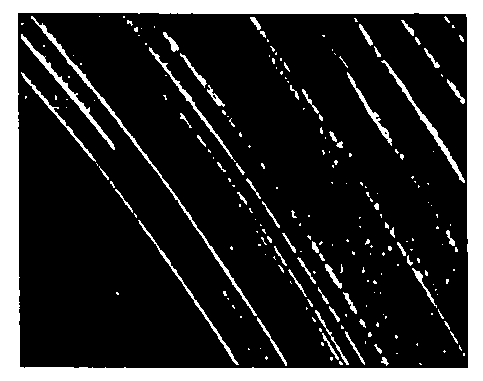
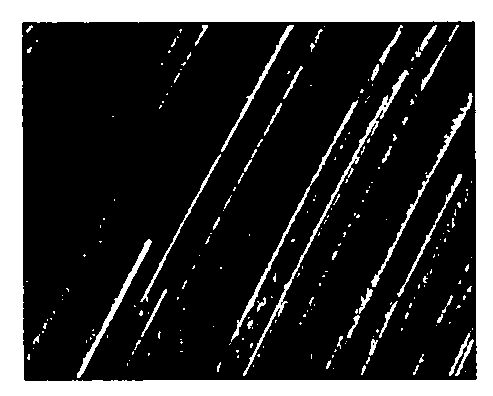
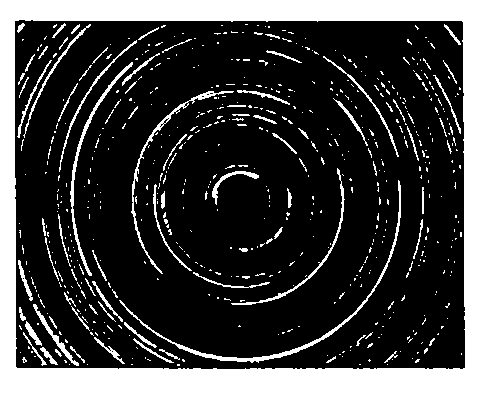
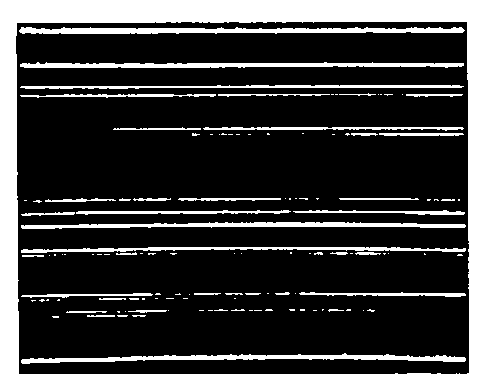
![]()
Base your answers to questions 9 through 13 on the diagram below, which represents the position of the Sun with respect to Earth's surface at solar noon on certain dates. The latitude of six locations on the same line of longitude are shown. The observer is located at 42° N in New York State. The dates for the Sun at Position A has been deliberately left blank.
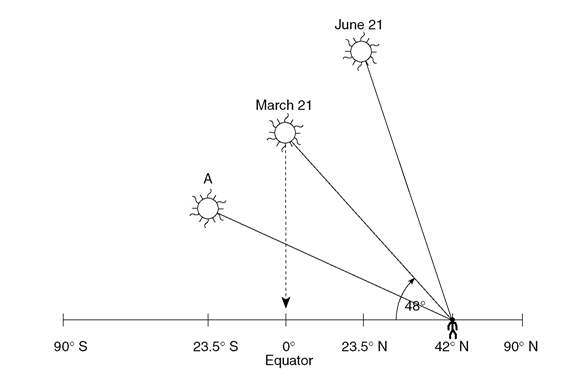
The Tropic of Cancer.
The Tropic of Capricorn.
The Equator.
The Antarctic Circle.
Winter
Spring
Summer
Autumn
September 23
December 21
October 21
January 21
longer days than nights.
12 hours of daylight and 12 hours of darkness.
the lowest annual altitude of the Sun at solar noon.
the highest annual altitude of the Sun at solar noon.
Plattsburgh
Mount Marcy
New York City
Slide Mountain
![]()
Earth is closer to the Sun.
the number of sunspots increases.
Earth's northern axis is tilted towards the Sun.
the Sun gives off more energy.
March 21
June 21
September 23
December 21
March 22
June 22
September 22
December 22
north
south
east
west
a greater number of hours in a day.
a greater number of days in a year.
a reversal of polar and equatorial climates., the result would be
an equal number of hours of daylight at most locations.
shorter days and longer nights at the Equator.
less difference between winter and summer temperatures in New York State.
colder winters and warmer summers in the Northern Hemisphere.
an increase in the amount of solar radiation received by the Earth.
receives less ultraviolet radiation.
receives more intense insolation.
has more cloud cover.
has a thicker atmosphere.
0° and 23.5°N.
23.5°N and 47°N.
47°N and 66.5°N.
66.5°N and 90°N.
![]()
Use the diagram below to answer questions 22 through 25.
A
B
C
D
A
B
C
D
A
B
C
D
Winter
Summer
Spring
Autumn
![]()
Base your answers to questions 26 through 29 on the diagram below, which shows a model of the apparent path and position of the Sun in relation to an observer at four different locations, A, B, C, and D, on Earth's surface on the dates indicated. The zenith (Z) and the actual position of the Sun in the model at the time of the observation are shown.
A
B
C
D
at the Equator
at the North Pole
at the South Pole
in Oswego, New York
increase only.
decrease only.
increase, then decrease.
decrease, then increase.
The Tropic of Capricorn
The Equator
The Tropic of Cancer
The Arctic Circle
![]()
Base your answers to questions 30 and 31 on the diagram below, which shows sunlight entering a room through the same window at three different times on the same winter day.
the Sun rotating at a rate of 15° per hour.
Earth rotating at a rate of 15° per hour.
the Sun's axis tilted at an angle of 23°.
Earth's axis tilted at an angle of 23°.
north
south
east
west
![]()
At sunset on the following evening, the Moon will be located at position
A.
B.
C.
D.
Moon's distance from the Earth changes at a predictable rate.
Moon's axis is tilted.
Moon spins on its axis.
Moon revolves around the Earth.
lunar eclipse.
solar eclipse.
new moon.
full moon.
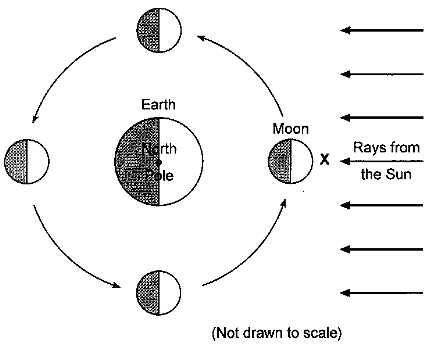
Beginning with the Moon at position X, which sequence of Moon phases would be seen by an observer on Earth during one month?
![]()
![]()
![]()
![]()
![]()
Base your answer to questions 36 through 39 on the diagram below, which shows the Moon in different positions as it revolves around Earth, as observed from above the North Pole.
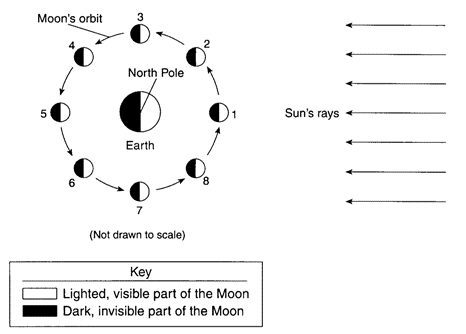
1 and 5
2 and 6
3 and 7
4 and 8

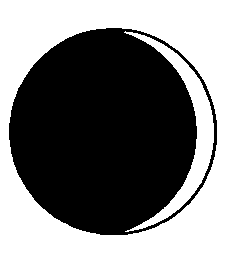
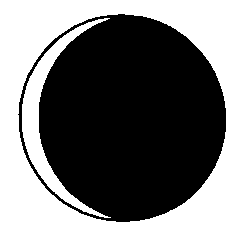

2
4
6
8
2
4
6
8
![]()
sun spots.
the sun's corona.
the sun's solar winds.
nothing of the sun, since it is totally blocked by the moon.
more hydrogen and less helium.
more helium and less hydrogen.
more oxygen and less carbon.
less oxygen and more carbon.
to expand as a red giant, undergo a nova outburst, and end as a white dwarf.
to shrink to a white dwarf, then eventually expand to a red giant.
become hotter and expand into a blue supergiant.
to become a black hole.
mass
percentage of helium
percentage of carbon
apparent brightness
nova
pulsar
super nova
nebula
solar eclipses
solar flares
meteorites entering the atmosphere
lunar eclipses
hydrogen.
helium.
oil and various hydrocarbons.
oxygen.
is larger.
is more dense.
is closer to the Sun.
has a more elliptical orbit.
the Moon
the Sun
Venus
Polaris
a constellation.
the universe.
the Milky Way galaxy.
our solar system.

Earth
Sun
Moon
Polaris
a type of solar system.
a constellation visible to everyone on Earth.
a region in space between the orbits of Mars and Jupiter.
a spiral-shaped formation composed of billions of stars.
It is one of many galaxies in the universe.
It is made up of billions of stars.
It is about 4.6 x 109 years old.
It is a spiral-shaped galaxy.
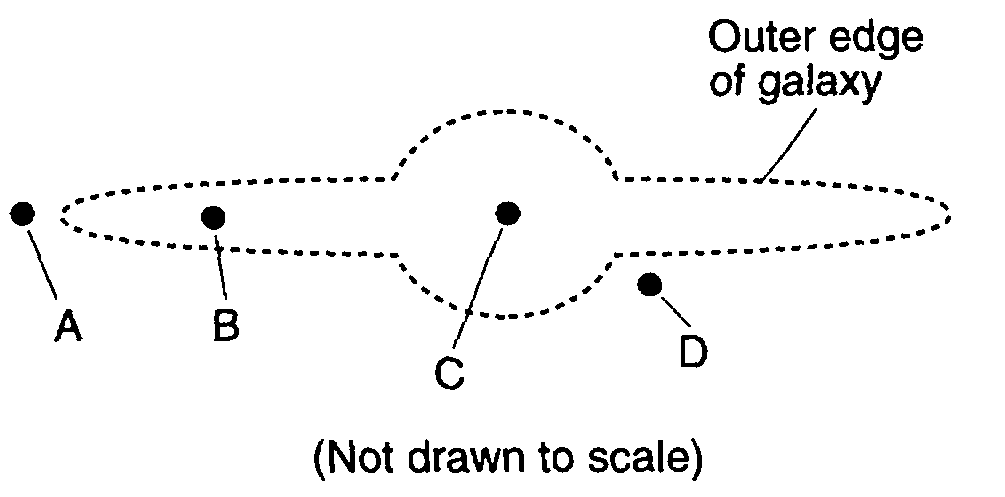
At approximately which position is Earth's solar system located?
A
B
C
D
galaxy → solar system → universe → planet
solar system → galaxy → planet → universe
planet → solar system → galaxy → universe
universe → galaxy → solar system → planet
1
1,000,000
1,000,000,000
2
0
1
2
3
spherical in shape.
4.6 billion years old.
composed of stars revolving around Earth.
one of billions of galaxies in the universe.
Which diagram shows the correct relationship between these four regions??
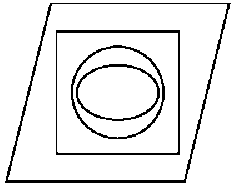





contracting.
expanding.
stays the same size.
expanding and contracting regularly.
observations of supernova explosions.
the discovery of black holes.
observations that the Doppler red shift becomes greater as we look at more distant galaxies.
observation that most galaxies are rotating.
the slower it is moving away from us.
the faster it is moving away from us.
the slower it is moving towards us.
the faster it is moving towards us.
gamma rays, x rays, ultraviolet rays, visible light
radio waves, infrared rays, visible light, ultraviolet rays
w rays, infrared rays, blue light, gamma rays
infrared rays, radio waves, blue light, red light
half-life
temperature
wavelength
wave velocity
violet
blue
green
yellow
shorter.
longer.
the same.
shorter than normal.
longer than normal.
unchanged.
the Sun
a blue supergiant
a white dwarf
a red star
300°C
3,000°C
5,000°C
10,000°C
in the Red Dwarf region.
in the Supergiant region.
among the White Dwarfs.
on the Main Sequence.
hotter and lass luminous.
cooler and more luminous.
the same temperature and larger.
hotter and larger.
among the hottest stars.
among the smallest stars.
very unique.
about average in all respects.
Barnard's Star
Betelgeuse
Rigel
Sirius
![]()
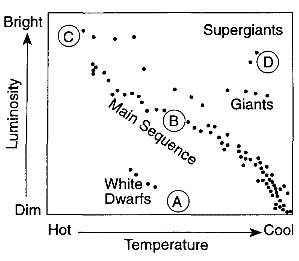
A
B
C
D
A
B
C
D
A
B
C
D
A
B
C
D
A
B
C
D
A
B
C
D
![]()
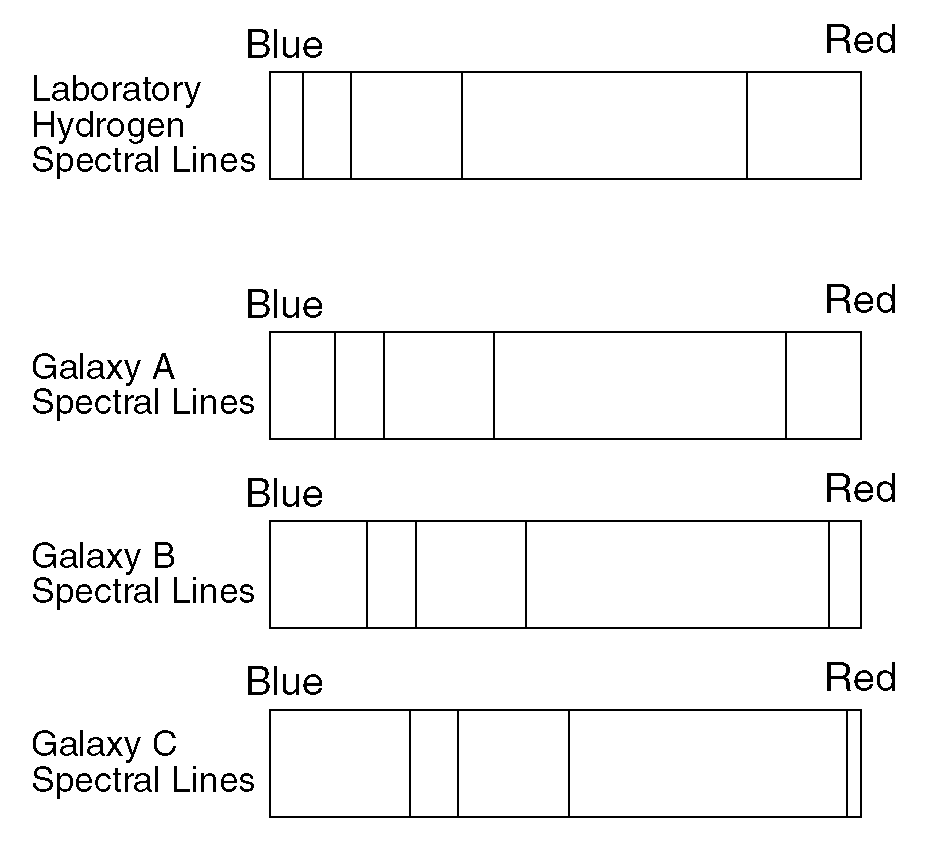
What is the best inference that can be made concerning the movement of galaxies A, B, and C?
Galaxy A is moving away from Earth, but galaxies B and C are moving towards the Earth.
Galaxy B is moving away from the Earth, but galaxies A and C are moving towards the Earth.
Galaxies A, B, and C are all moving toward the Earth.
Galaxies A, B, and C are all moving away from the Earth.
the larger it is.
the faster is is rotating.
the hotter it is.
the faster it is moving away from us.
![]()
Base your answers on questions 82 and 83 on the diagram below, which shows an inferred sequence in which our solar system formed from a giant interstellar cloud of gas and debris. Stage A shows the collapse of the gas cloud, stage B shows its flattening, and stage C shows the sequence that led to the formation of the planets.
became spherical in shape.
formed a central bulge.
became larger in diameter.
eventually formed into planets.
when gravity caused the center of the cloud to contract.
when gravity caused heavy dust particles to split apart.
by outgassing from the spinning interstellar cloud.
by outgassing from Earth's interior.
![]()
Shorter than normal (a red shift).
Shorter than normal (a blue shift).
Longer than normal (a red shift).
Longer than normal (a blue shift).
![]()
Base your answers to questions 85 through 89 on the diagram below. The diagram represents a plastic hemisphere on which lines have been drawn to show the apparent paths of the Sun on four days at one location in the Northern Hemisphere. Two of the paths are dated. The protractor is placed over the north-south line. X represents the position of a vertical post.
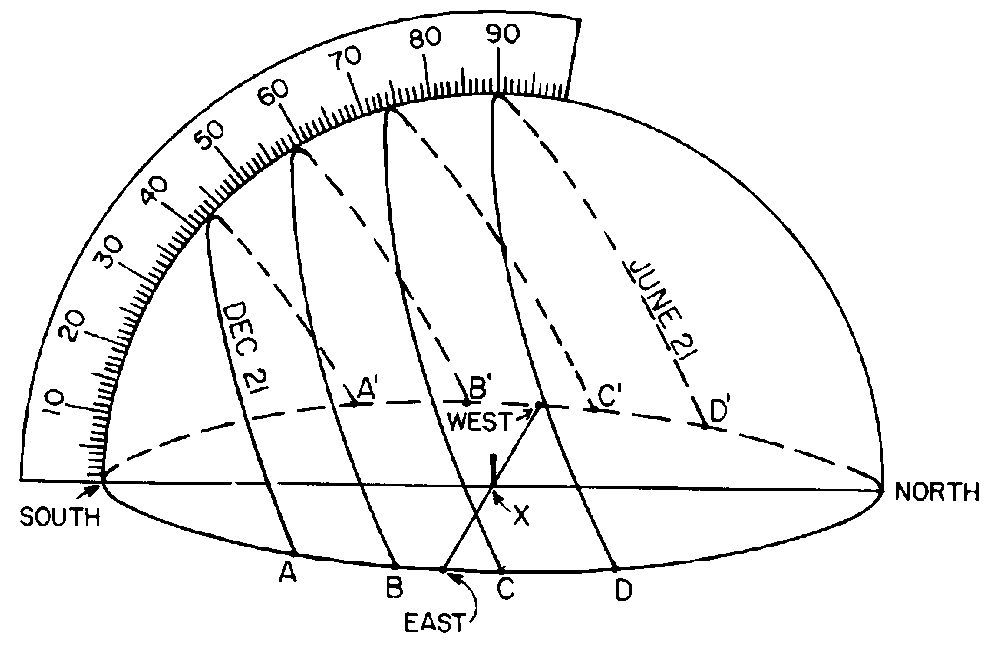
A-A'
B-B'
C-C'
D-D'
A-A'
B-B'
C-C'
D-D'
43°
47°
66.5°
74°
The Earth's orbit is an ellipse.
The Earth's shape is an oblate spheroid.
The Earth is closest to the Sun in winter.
The Earth rotates on its axis.
0°
23.5°N
66.5°N
90°N
![]()
Base your answers to questions 90 through 94 on the diagram of the solar system below.
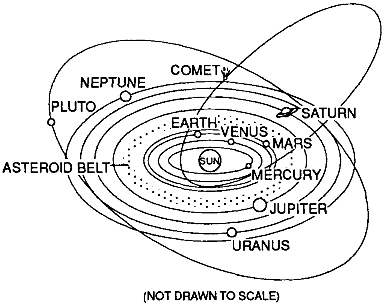
If the Earth's distance from the Sun were doubled, the gravitational attraction between the sun and Earth would be
one-half as great.
two times as great.
one-fourth as great.
four times as great.
shorter its period of rotation.
shorter its period of revolution.
longer its period of rotation.
longer its period of revolution.
heliocentric model
geocentric model
sidereal model
lunar model
Its composition has a greater similarity to a comet than a planet.
It is considered to be too small in size.
It is too cold and too far from the Sun.
Its orbit is very eccentric and is tilted compared to the eclectic plain.
It is located between Mars and Jupiter, separating the terrestrial planets from the Jovian planets.
It is the remnants of a planet that never formed due to conflicting forces of gravity caused by Jupiter and the Sun.
It is used to infer the chemical composition of the interior of Earth and the other terrestrial planets.
It is called the Kuiper belt and is responsible for all of the comets in our solar system.
![]()
Base your answers to questions 95 through 97 on the diagram below. The diagram shows the apparent paths of the Sun at the beginning of each season for an observer at a location in New York State.
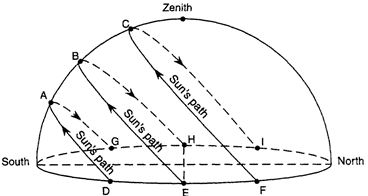
June 21
August 23
September 23
December 21
June 21
August 23
September 23
December 21
June 21
August 23
September 23
December 21
![]()
Base your answer to questions 98 through 102 on the diagram below, which represents the elliptical orbit of a planet traveling around a star. Points A, B, B, C, and D are four positions of this planet in its orbit.

0.1
0.2
0.3
0.4
A
B
C
D
rotation.
inclination.
declination.
revolution.
decrease, then increase.
increase, then decrease.
continue to increase.
.remain the same.
A
B
C
.D
![]()
Use the diagram below to answer questions 103 through 110. This diagram shows the Earth in four different locations as it orbits the Sun.
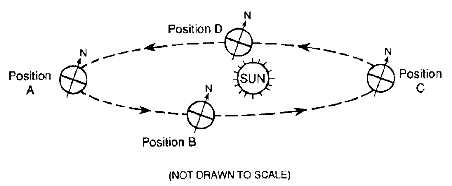
Which of the following dates is it most likely to be when the Earth is in Position A in its orbit around the Sun?
December 21
March 21
June 21
September 23
Which of the following dates is it most likely to be when the Earth is in Position B in its orbit around the Sun?
December 21
March 21
June 21
September 23
Which of the following dates is it most likely to be when the Earth is in Position C in its orbit around the Sun?
December 21
March 21
June 21
September 23
Which of the following dates is it most likely to be when the Earth is in Position D in its orbit around the Sun?
December 21
March 21
June 21
September 23
perihelion.
aphelion.
perigee.
apogee.
perihelion.
aphelion.
perigee.
apogee.
A
B
C
D
A
B
C
D
![]()

What is the eccentricity of this planet's orbit?
0.030
0.158
0.253
3.95
![]()
Base your answers to questions 112 through 124 on the diagram below, which shows four planets, A, B, C, and D, in their orbits around their star. The star is shown as one of the two foci, and the other focus is labeled f. There are four locations, 1, 2, 3, and 4, within the orbit of planet A shown on the diagram.
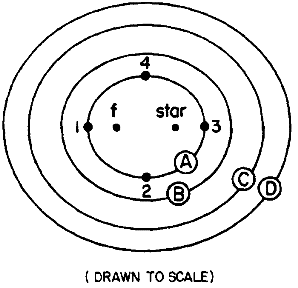
2.000
1.700
0.578
.0.500
3.529
0.353
0.283
.0.176
0.246
0.459
4.059
.-0.521
0.615
1.615
0.179
.0.559
Planet A.
A non-existent location that is used to represent where the forces of gravity and inertia are balanced.
A star that is either outside the solar system or an invisible star in the center of the solar system.
.A black hole in the center of our solar system, but a small distance away from the star.
A
B
C
.D
A
B
C
.D
A
B
C
.D
A
B
C
.D
1
2
3
4
1
2
3
4
1
2
3
4
1
2
3
4
![]()
Earth
The Earth's Moon
Jupiter
Saturn
![]()